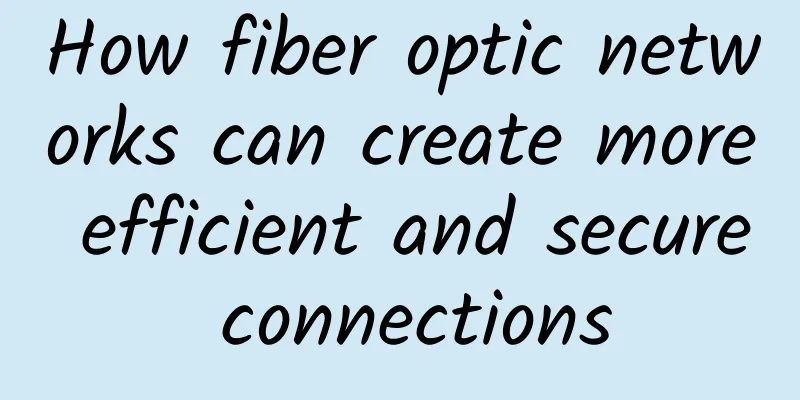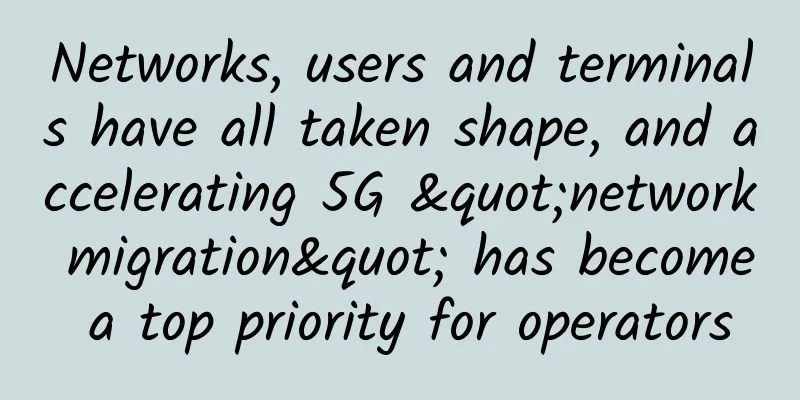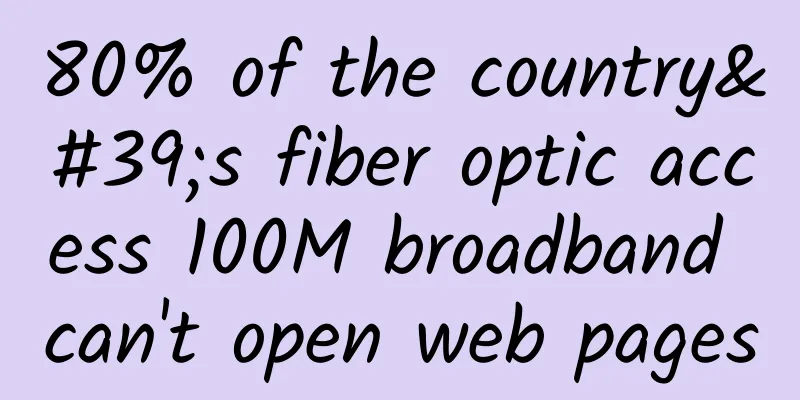How fiber optic networks can create more efficient and secure connections

|
We live in a technologically advanced age where high-speed internet has become the backbone of daily operations and commerce. Businesses, online stores, and enterprises rely heavily on the internet to function. This is where fiber optic internet helps in providing high-quality, reliable, and fast internet to meet the daily needs of businesses. Broadband internet provides faster upload and download speeds than other forms of internet connection. According to Cisco's annual internet report, the total number of internet users will be approximately 5.3 billion by 2023. This number is an increase of 3.9 billion from 2018. This highlights the importance of fiber optic connections. Let's explore how fiber optic deployment services can make network connections more efficient and reliable. Fiber optics and its huge impactInternet connectivity via fiber has its own advantages, but requires a robust fiber deployment service physical system to maintain all connections on the network. Therefore, appropriate infrastructure is required to maintain the integrity of the physical system and provide the best experience for billions of users. Businesses need to connect to the internet, which requires strong infrastructure. However, a region must provide these facilities by connecting to the internet through fiber optics. This will require strengthening long-distance fiber optic networks that connect servers and data centers around the world. Converged fiber and wireless networksIn our country, most connections are in the form of mobile networks, which have little in common with fixed-line fiber networks. However, as more and more consumers meet their basic voice and data needs through smartphones, data volumes have increased dramatically. As the need to move more data at faster speeds around core mobile networks accelerates, mobile technology must become more efficient to keep up with these demands. This means finding an easy way to solve this problem, the core of the mobile network must consist of fixed lines, usually in the form of fiber optic connections. The need for fiber optic networksFiber optics and wireless networks go hand in hand. However, wireless networks are limited in their ability to carry out mobile communications and data transmission over the electromagnetic spectrum, even if it is a technically suitable medium. Telecom and fiber operators have undertaken major infrastructure projects in the past few years in the form of fiber deployment services. Now, with LTE (Long Term Evolution) technology outperforming other technologies, it has become possible to provide consumers with higher speed services. The line rate may be high, but customers can get good reception even in a fast-moving vehicle. 5G brings with it major connectivity issues. As bandwidth increases, the coverage of a single cell decreases. This necessitates the need for more base stations or towers. This creates the need for fiber optics. As network traffic increases, base stations using wireless technology cannot effectively relay to the target cell. In short, as the number of base stations increases, more cable connections are needed because more cable routes are needed. Meeting the needs of capacity growthIt is critical to assess the need to backhaul mobile data over fiber networks. The growth rate of mobile data has been rising. A simple calculation of at least one mobile connection per person shows that capacity demand will definitely peak. Therefore, mobile operators will make extensive use of advanced fiber build-out and deployment plans. Typically, there has been a lack of resources, awareness and reluctance to build dedicated fiber networks. However, the continued growth of mobile services is associated with fiber. Essentially, this will accelerate fixed-mobile convergence, and the impetus for data transmission will shift to fixed fiber. Most people need fixed broadband, even for the lowest upload and download speeds, but the use of fibre technology in connecting the internet will change this by rolling out services through fibre. How fiber optic networks can create more efficient and secure connections
Fiber optics has all the potential to improve communications and connectivity with its advanced technology. Fiber optics can be relied upon to provide high connection speeds even in the case of multiple users. In addition, fiber optics can also improve bandwidth, cloud connectivity, and VoIP capabilities in the network, thereby improving network aspects and productivity.
As more and more businesses turn to the cloud, this type of connectivity has revolutionized the way businesses operate. It enables all operational data to be stored in a virtual data center that can be easily accessed by authorized users at any time and from anywhere. Today, fiber optic cables are used to connect cloud data centers and cloud servers. Therefore, these cables constitute a vital data transmission medium in cloud computing architecture.
Fiber optic cables offer more bandwidth compared to copper cables. With high bandwidth, data transmission needs can be easily met along with faster speeds. Moreover, fiber optic internet can make slow internet a thing of the past.
Fiber optic cables are highly secure because they are challenging cables to connect. Even if the cable breaks at some point, an alarm system can be set up for physical monitoring. In addition, fiber optics also provide advanced encryption strategies such as optical encryption and optical steganography.
Fiber optic cables are better and more efficient than copper cables at transmitting data over long distances. They are also more durable and robust, with a lower risk of damage than traditional copper cables. Reliable connectivity is a critical network requirement, and fiber optic cables provide this advantage. SummarizeFiber optic networks can significantly change the network of an enterprise. Enterprises can plan to seamlessly expand their networks using optical fiber. It can achieve faster and higher data speeds as well as data transmission over longer distances. The development and utilization of optical cables have made their application in various industries more important. It has become the core technical support for network construction in recent years. Providing fiber optic networks to consumers will enable high efficiency, incredible speeds and productivity. Fiber optic networks provide a valuable investment in future-proofing networks, supporting growth and innovation to create a digitally advanced economy. FAQQ: What makes fiber optic cables so reliable for connecting the internet?Fiber optic cables transmit signals in the form of light pulses but do not conduct electrical current. This makes fiber optic data connections completely immune to electromagnetic interference or radio signals. They are also unaffected by lightning and severe weather conditions. Q: What are the advantages of fiber optic cables compared to copper cables?Copper cables are made of metal, are heavy, and are easily damaged and corroded, which can cause network transmission problems. Fiber optic cables are thinner, lighter, and can even withstand greater tension than copper. Fiber optic cables are flexible, corrosion-resistant, and easy to bend, so they are not easily damaged. Q: How does fiber optics provide low latency in network communications?Fiber optic cables are responsible for the transmission of light signals. The refractive index of the fiber causes light to travel through the cable 1.5 times slower than it would in a vacuum. This speed reduction increases latency to about 5µs/km, which is necessary to achieve ideal performance. This is the lower limit of latency that can be achieved in practice if all possible sources of latency are eliminated. Q: Why does fiber have higher bandwidth?Optical fiber allows data to be transmitted in the form of light pulses through a glass guide wire. Therefore, the data travels at almost the speed of light. Therefore, the bandwidth requirements of optical fiber cables are very high, on the one hand because of the fast data transmission speed, and on the other hand because of the distance that the data can be transmitted without attenuation. Q: Why is fiber optic internet better than wireless?The main difference between the two networks is speed. Wireless networks may show slower transfer speeds during busy hours. However, fiber optic connections remain strong even during network peak hours. Therefore, fiber optic cables offer faster data transfer speeds than wireless networks. |
<<: Ten Tips to Simplify Fiber Optic Cable Installation
>>: Fiber Optic Cable Types and Installation Tips
Recommend
Where is the domestic Wi-Fi 6 chip heading?
What was the past life like, what is the present ...
In addition to "new infrastructure", what else can operators do for "stability and security"
Solidly carrying out the "six stability"...
Juniper Networks focuses on AI technology to fight the epidemic
With the advent of the "post-epidemic era&qu...
An article to understand the IPIP network mode of calico
[[397426]] Preface This article mainly analyzes t...
Finally someone explained the role of OSI and TCP clearly
I have mentioned the OSI reference model and the ...
Practice on optimizing VUA forwarding performance of vivo unified access gateway
VLB stands for vivo load balance. As the IDC traf...
Editorial: 5G should adhere to the development model of mutual promotion between construction and use
At a press conference held by the State Council I...
Top 10 predictions for the telecommunications industry in 2017: 5G standardization deployment will take another 6 years
[[180050]] Telecoms.com has teamed up with mobile...
Intelligent connectivity: the convergence of 5G with AI, IoT and AR
Although it is still too early to truly measure t...
Understand IP addresses in one article: meaning, classification, subnet division, check and change, routers and IP addresses
This article will combine easy-to-understand pict...
Deploy on demand: China Telecom plans to open 320,000 5G base stations in 2021
[[386510]] Today, China Telecom announced its ful...
Which bare metal cloud service provider is the best? Huawei Cloud is happy
[51CTO.com original article] A few years ago, whe...
Mellanox Launches Innovative ConnectX-6 Dx Chip, BlueField-2 Secure Cloud SmartNIC and I/O Processing Unit Solutions
Beijing, China – September 3, 2019 – Mellanox Tec...
How does Sentinel intercept abnormal traffic?
[[342079]] When you use electricity at home, you ...
Mainstream IoT wireless technologies are here!
This article covers: Bluetooth, WiFi, BLE, Zigbee...









